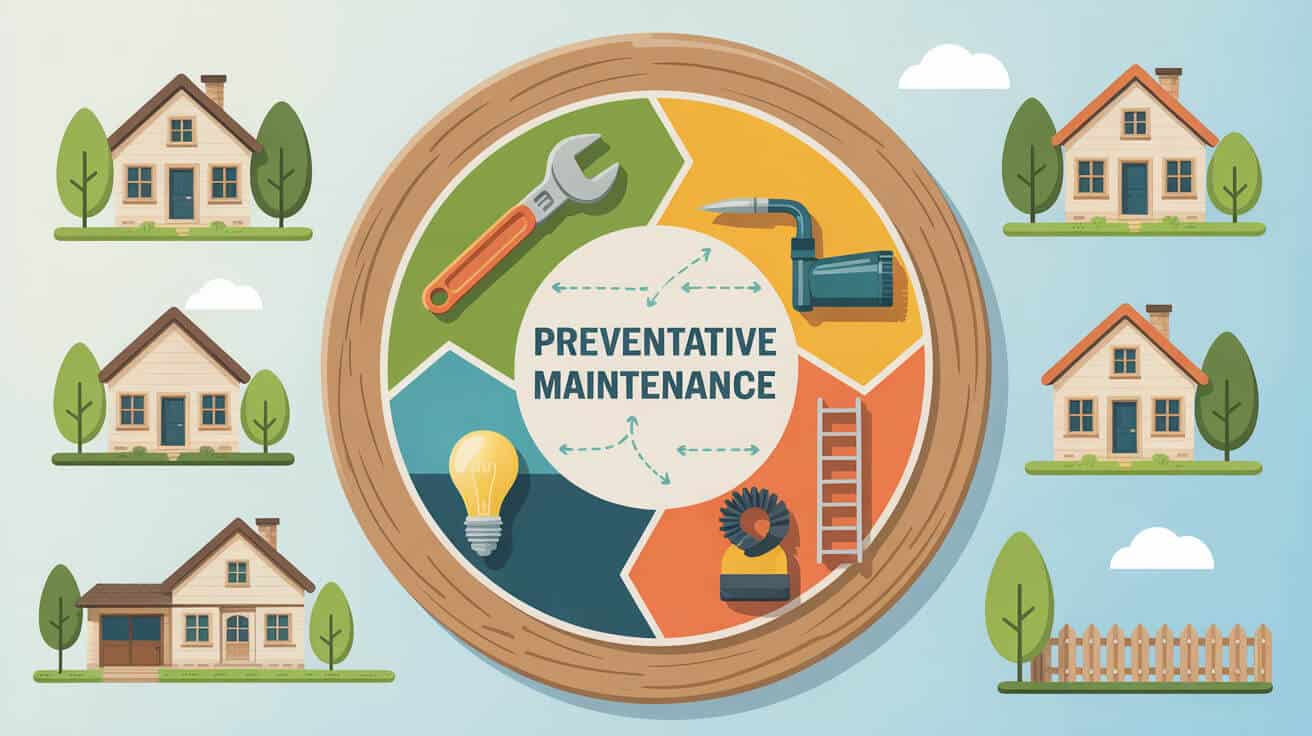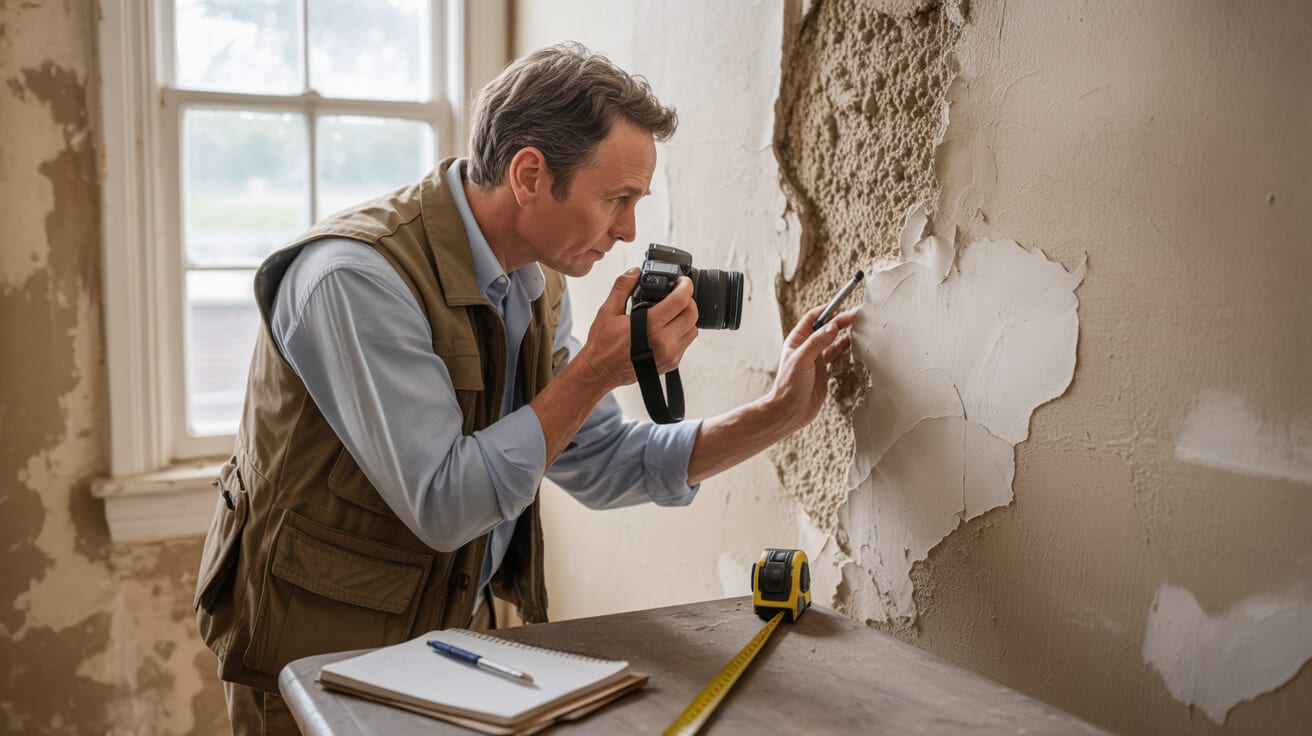 A Guide To Building Regulations For Structural Alterations
A Guide To Building Regulations For Structural Alterations

Why Do Building Regulations Decide Whether Your Alteration Pays Off or Backfires?
The moment you alter a wall, add a loft, or even open up a kitchen-diner, you’re triggering an invisible system—building regulations. These aren’t just legal hoop-jumping. They’re what prevent a new beam from sagging, a fire exit from clogging, or a future house sale from collapsing at the last hurdle. For UK property owners, managers, and responsible contractors, compliance is the difference between an uplift in value and an uninsurable risk nobody wants to inherit.
Compliance locks in your freedom to sell, let, or expand—neglect it, and your asset slips out of your hands.
A compliant project is transferable, defensible, and, above all, protected when things go wrong. Non-compliance, on the other hand, turns every lender, surveyor, and buyer into an obstacle. The regulations you follow today are your “invisible asset”—making sure nobody inherits a ticking time bomb hidden in the fabric.
What Are Building Regulations Actually Protecting You From?
Building regulations aren’t decoration police. Their remit spans:
- Structural stability: – making sure loads transfer safely and nothing collapses, whether from age, weather, or a future remodelling.
- Fire safety: – protecting escape routes, containing flames, and giving people time to get out.
- Ventilation and air quality: – preventing mould, CO2 build-up, or sick building syndrome, especially with ever-sealing insulation upgrades.
- Energy performance: – ensuring you don’t build in obsolete inefficiency or create a future liability under climate policy.
- Disabled access: (where required) – making buildings usable for everyone, protecting from lawsuits and future ‘fitness-for-use’ claims.
Every rule ties back to safeguarding your investment and the lives using the space—not just today, but for decades to come.
Silent faults—structural cracks, hidden damp, or weak insulation—don’t show up until it’s too expensive to fix.
Following regulations up front is your way of putting big, ugly surprises in the rear-view mirror.
Which Common Projects Must Satisfy Building Regulations, Even if They Seem Small?

Many owners mistakenly assume building control only applies to new-builds or huge refurbs. Reality check: the net is much wider, catching out those who see a “simple knock-through” or “harmless conversion” as risk-free. The most everyday upgrades—especially where structure, exits, insulation, or air flow change—almost always need a professional check.
Which Jobs Are Inspected and Why?
- Structural wall changes: – Removing or moving load-bearing walls? That’s the core of the regulations’ territory.
- Creating or enlarging window and door openings: – This impacts both stability and the ‘means of escape’ for fire safety.
- Conversions: – Transforming attics, basements, or garages rewrites structure, insulation, and fire zones.
- Major heating, plumbing, or ventilation upgrades: – Not just energy savings: the wrong instal can risk fire, carbon monoxide, or damp.
- Any extension or major layout change: – Even ground-floor infill, side returns, or conservatories link back to overall structure and energy compliance.
- Upgraded insulation and sustainability features: – The bar for heat loss and air permeability is raised almost yearly. What was “good enough” is often obsolete within a decade.
Regulations are getting sharper—not weaker—with every energy and climate upgrade cycle ([GOV.UK](https://www.gov.uk/government/publications/building-work-replacements-and-repairs-to-your-home/building-work-replacements-and-repairs-to-your-home?utm_source=openai)).
What About “Small” Jobs—Are You Really Exempt?
Not always. Replacing windows, moving radiators, or fitting extractor fans now comes with ever-stricter energy or ventilation standards. Materials must meet modern “U-values,” and overlooking paperwork—even on swaps—often halts insurance or resale years later (LABCFrontDoor).
Are Sustainability Upgrades Creating More Compliance Steps?
Absolutely. Every upgrade aiming for better sustainability—triple glazing, solar, condensing boilers, or green roofs—triggers compliance checks, not just for the eco benefit but for safe installation, integration with systems, and maintenance impact (Severn Wye).
How Can You Instantly Know If Your Property Alteration Needs Formal Approval?

You don’t have to guess (or gamble). Here’s a quick self-test every manager or owner should apply before the first tool comes out:
- Are you disturbing load-bearing elements (walls, beams, lintels)?
- Will you add or widen any openings (doors, windows, hatches)?
- Is the project converting use (garage to living, attic to office, storage to flat)?
- Any upgrades to heating, hot water or ventilation—not just swapping like for like?
- Adding or switching out thermal or sound insulation?
- Changing plumbing, wiring, or drainage in tandem with any of the above?
A single “yes” means you’re almost certainly on the regulatory map, even if the job looks “routine”.
When in doubt, reach out—early advice from Building Control or a certified technician is far cheaper than retroactive fixes or legal arm-wrestling.
What Evidence Makes Proving Compliance Easier Down the Line?
- Keep emails with surveyors or any authorities.
- Log “before” and “work-in-progress” photos.
- Stash all certificates, specs, and drawings (digitally and in print).
- Annotate plans—proving you’ve checked compliance at each step.
Every item covers your back when selling, letting, or insuring. It gives you—and any buyer—instant proof your asset isn’t booby-trapped by hidden failures.
What’s the Step-By-Step Process to Stay on Top of UK Building Regulations for Alterations?

Securing sign-off isn’t a paperwork obstacle—it’s the backbone of future value. Skimping or skipping steps means your project may be unusable, uninsurable, or unsellable for reasons no one sees coming. Smart project managers and property owners know the steps aren’t “bureaucracy for its own sake”—they’re peace-of-mind engineering.
Step 1: Scope Everything Up Front
Mark out what touches load, escapes, energy, plumbing, or electrics. If it does, you’re in the zone.
Step 2: Select the Right Building Control Body
Decide: council Building Control (familiarity, public trust) or Approved Inspector (often faster, sometimes more digital). Both sign-off work and issue equally valid certificates.
Step 3: Decide Your Application Type
- Full Plans Application: For anything complex. Submit detailed plans, calculations, and let officers review before building starts. More setup, less risk of mid-job reversals.
- Building Notice: For minor, mostly domestic works. Quicker and cheaper, but minimal upfront vetting—more “see you on site”.
For major works or anything involving change of use, stick to full plans. For “routine” home tweaks, building notice may suffice (FMB).
Step 4: Book and Complete All Required Inspections
Inspectors come at specific stages: after demolition, at key structural instals (steels, joists), before anything is permanently covered. Miss a check, you risk forced rework or delays.
Step 5: Keep Every Certificate, Plan, and Email Safe
A single missing cert (completion, engineer’s sign-off, insulation spec) can freeze sales, block insurance, or land you fined years later.
Filling a compliance file up-front is 100x easier than chasing paperwork after the fact.
Why Skipping Building Regulations Is Dangerous—Financially and Personally

Fast-tracking or ignoring compliance isn’t “crafty” or “cost-saving”—it’s rolling a dice with your future. Regulated systems now scan property records, and enforcement isn’t just some council threat: it’s embedded at every transaction, insurance renewal, or mortgage review.
What Are the Risks of Non-Compliance?
- Sales freeze: – You can’t legally sell, let, or refinance until every alteration is proved compliant.
- Costly indemnity policies: – Lenders often force expensive insurance for missing certificates—*if* they allow the deal at all.
- Enforcement and legal costs: – Local authorities can hit you with orders—demolish, repair, or re-do—often at premium rates.
- Insurance nightmares: – Claims for issues in unregulated works get denied. Insurers can void cover entirely for undeclared alterations.
- Safety and liability: – If injury or fire links back to an uncompliant mod, you or your organisation inherit full legal and financial responsibility.
- Unseen costs: – Retrospective fixes are often 2–10x more expensive than doing it right at build-time ([FMB](https://www.fmb.org.uk/find-a-builder/ultimate-guides-to-home-renovation/building-regulations-what-you-need-to-know.html?utm_source=openai)).
Non-compliance never stays hidden—digital checks make sure every liability lands back on your desk.
How Do Smart Owners, Managers, and Contractors Make Compliance Stress-Free?

Getting regulation right isn’t about being a building code wizard—it’s about choosing the right partners. Here’s the cheat-code:
- Work with accredited, multi-trade professionals (City & Guilds, NVQ, IPAF, PASMA). These people don’t “guess” compliance; they live it.
- Demand evidence—certificates, sign-off logs, project photos. If your contractor can’t provide a track record, find someone who can.
- Engage with Building Control early and openly—including for “borderline” jobs. Modern inspectors offer Q&A and informal checks before a single brick is touched.
- Digitise everything: plans, certificates, emails, and photos. Storage isn’t the issue—the only risk is “forgetting what you’ve got” when it matters.
The best compliance stories are boring—no dramas, no surprises, just frictionless progress when it’s needed most.
Practical Action for Facility Managers and Owners
- Keep one compliance folder (physical and digital) for every property, always up to date.
- Document *everything*—especially phone calls, site visits, inspector feedback.
- Never release final payments until every sign-off is both received and checked for accuracy.
How Does All Services 4U Take the Compliance Weight Off Your Shoulders?

Imagine a project where you never chase updates, guess at regs, or fight for certificates. All Services 4U builds compliance into every move—so your alteration is not just safe, it’s an investment-grade asset.
Our team—led by multi-trade, code-fluent professionals like Hector Gauge—treats every job as a compliance mission, not just a quick fix. We coordinate with inspectors, document every milestone, and create a digital trail that makes future sales, audits, or insurance completely painless.
Our approach in practice:
- Upfront scoping: No surprises—every project start includes a compliance review tailored to your property and plans.
- Proactive reporting: You see every step—inspection dates, digital photos, certificates—in real time.
- Direct liaison: Our team talks to inspectors, surveyors, and local authorities on your behalf; questions get answered before they become stumbling blocks.
- Permanent records: Every project file is safely archived and instantly retrievable for your next deal, valuation, or mortgage.
Don’t throw away £’000s on last-minute paperwork chases—build the file as you go and take compliance worries off the table for good.
Why All Services 4U Future-Proofs Your Asset—Not Just the Current Project

You don’t just want a project finished—you want a property that’s sellable, mortgageable, and insurable for years. That’s what compliance, managed well, delivers:
- No nasty surprises: – Buyers, lenders, or letting agents get instant proof that your property is safe, legal, and ready for whatever comes next.
- Reduced risk: – Unexpected costs, time delays, or failed audits evaporate.
- Premium value: – Properties with straight compliance trails consistently command higher sale and rental prices.
- Long-term resilience: – If regulations or owner intentions change, a robust compliance file means adaptation is easy.
All Services 4U doesn’t just aim for “approval”—we ensure your next round of plans, upgrades, or deals never get blocked.
Compliance is leverage. It’s the invisible certificate that makes your asset liquid, scalable, and resistant to whatever the next decade throws at it.
What Action Sets You Up for Stress-Free Alterations? (And Protects You Beyond the Current Job)
Your next move: don’t just “comply”. Leverage compliance as an engine for property growth, peace, and security. Partner with a team that owns the process and signs their name to each stage.
Work with All Services 4U, and you access:
- Bespoke compliance survey: —a tailored checklist to your property, your plans, and your risks.
- Active scheduling: —we map the route, book inspections, and communicate in plain language at every step.
- Access to expertise: —direct answers from UK-certified multi-trade pros who act and explain (not just tick boxes).
- Digital-first records: —access every cert, plan, and communication, any time, from your phone or inbox.
Ready to turn compliance from a headache into your next selling point? Get in touch for a compliance review, project plan, or urgent query. If in doubt—even on the small jobs—ask before you act. The future value of your property depends on the moves you make today.
Value isn’t just in bricks or square footage—it lives in every compliance box you tick. That’s the real competitive advantage.
Frequently Asked Questions
What are the financial and legal consequences of neglecting building regulations for structural work in the UK?
Neglecting building regulations when altering key structural elements creates a hidden liability that rarely remains hidden for long. Load-bearing changes without certified compliance can lead to mandatory reversals, denied insurance claims, and refusal from lenders or buyers to proceed with transactions—a risk that compounds the further you go down the property lifecycle.
Properly documented breaches rarely get quietly swept aside. An enforcement notice is not just an inconvenience; it can mean rebuilding or undoing work at your expense, sometimes running to five-figure sums. In 2023, local authorities in England issued over 2,000 enforcement orders for non-compliant major alterations, with average direct remedial costs exceeding £5,800 per incident (DLUHC, 2023).
A missing certificate can block a sale far faster than a noisy neighbour ever could.
Why do historic non-compliances persist?
Unapproved work leaves a digital paper trail—planning portals and title records are routinely updated and accessible to solicitors, surveyors, and even tenants. Claims for damages or personal injuries stemming from non-compliant structures typically trace back to the current owner, not the prior builder, leaving you exposed long after the initial shortcut.
- Council records flag your property until compliance is regularised or work is reversed.
- Mortgage approvals are routinely suspended over outstanding compliance queries.
- Non-compliance is the second most common reason UK home sales collapse after 2021, according to Zoopla analytics.
Timely documentation and rectification are the only realistic ways to shield your asset and your reputation from these recurring ripple effects.
How can you irrefutably prove structural compliance—and why does evidence now outweigh talk?
Demonstrating airtight compliance today means more than saying the job’s done “to standard”—it requires an integrated record, beginning before the sledgehammer swings. UK Building Control, Approved Inspectors, and savvy buyers all demand a full evidence chain: certified drawings, stage photos, consents, and logged inspections. This documentation is now routinely digitised, referenced on legal packs, and cross-checked by lenders, surveyors, and major insurance groups.
What does an unimpeachable compliance pack look like?
- Engineer-signed drawings and calculation packs, tied to unique scheme references
- Time-stamped work-in-progress visuals and completed installation photos
- Council or Approved Inspector’s signed consent forms, plus digital copies
- Certificates of compliance for all trade services (electrical, plumbing) affected by the project
One missing file can delay a refinance for weeks; a single ambiguity in the paperwork can stall completions for months.
What if parts of your compliance trail are missing?
A growing number of local authorities offer “regularisation” pathways, but these involve site investigations, possible destructive testing, and can permanently mark your property as having reported compliance breaches—a factor that can cut 5–7% off asking price in affected postcodes (RICS, 2024). Preventing this scenario means implementing a digital-first record system that is always future-audit ready.
Why do “small” alterations so often trigger major compliance headaches, and what projects cause the most trouble today?
Perceived minor tasks—removing a chimney breast, widening a doorway, or retrofitting a new staircase—frequently have big implications for structure, fire safety, and energy efficiency. It’s not the scale of work, but its interaction with core safety, fire, and occupancy rules that triggers enforcement. According to the Federation of Master Builders, private flats, terraced homes, and pre-1985 builds have been hardest hit by enforcement notices for “minor” unauthorised works in the last 24 months.
A job that felt quick and cheap today rarely looks that way when the insurability or resalability of your entire property is called into question.
Where do disputes cluster?
- Interior wall removals or modifications, which often impact load dispersal or compartmentation
- Loft conversions or boarding, which affect insulation ratings and often miss fire escape benchmarks
- Flat or maisonette internal changes, where shared elements and access mean stricter oversight
- Houses in Article 4 conservation or listed zones, where even internal tweaks are heavily regulated
Securing trade-certified guidance and early compliance scoping for any project that impacts escape routes, structure, or energy consumption is now a non-negotiable first step for risk-aware owners.
What can a multi-trade, certified technician do that DIY or general builders can’t—and how does this shape your project outcome?
Bringing in a certified, multi-trade professional at the outset does more than just “box-tick.” These technicians assess risk areas, read blueprints with future audits in mind, and tailor workflows for both regulatory and practical realities. At All Services 4U, technicians like Hector Gauge:
- Identify exactly which planned works trigger UK Building Regulation requirements before costs begin to spiral
- Pre-liaise with Building Control or Approved Inspectors, smoothing the path for all structural and safety sign-offs
- Create a rolling digital compliance pack from day one—indexed, secure, and available for life, not just for the current transaction
- Spot legacy risks: poor-quality wiring in old extensions, hidden signs of subsidence, or ambiguous party wall boundaries
When compliance is planned—not reacted to—it keeps the project on track, protects your resale value, and turns chaos into a clear, structured process.
How do All Services 4U’s digital systems keep you protected?
Clients are provisioned with cloud-based access to staged photo logs, consent forms, inspections, and completion documents, so you’re always ready for an audit, valuation, or insurance event. This paperless chain cuts average transaction times by up to 2.5 weeks for properties with complex work histories (Propertymark, 2024).
What is the step-by-step roadmap for smooth, compliant delivery of any structural project in the UK?
A detailed compliance roadmap transforms regulation from an obstacle into a set of clear, achievable benchmarks. All Services 4U’s workflow is modelled on best practice:
How to build a compliance-first project:
- Initial scoping: Walk the job with a multi-trade certified pro to identify all notifiable elements.
- Early council/inspector engagement: Clarify approval routes and prepare design inputs.
- Digital plan & calculation submission: Engineer-reviewed, uploaded to your compliance portal.
- Regulatory submission: Decide between Full Plans or Building Notice pathway.
- Staged inspections: Book and log all checks—foundation, structure, service installations, completion.
- Rolling documentation: Collate photo evidence, consents, invoices, and communications as you go.
- Certificate collection: Duplicate digital and print versions for every formal sign-off.
Well-prepared jobs move faster through approvals and routinely face less council scrutiny at completion.
How to prepare for an inspection:
- Ensure all works are clearly marked and easy to access—obscured work often gets red-flagged.
- Have all paperwork on hand, from drawings to site photos, in both digital and print formats.
- Clarify access times for the inspector and notify site staff of inspection visits in advance to avoid delays.
How have regulations expanded for eco-retrofits, green upgrades, and sustainability projects, and what does that mean for compliance now?
Contemporary sustainability measures come with their own evolving compliance demands. New Part L (energy) and Part F (ventilation) updates have raised the bar on everything from cavity wall insulation to low-U glazing and greener roof options. Every step in eco-retrofit or renewable energy works is now scrutinised for both safety and environmental compliance, most often with higher documentation and inspection requirements.
- “Green” retrofits—solar, batteries, heat pumps—must be designed for structural loads, wind exposure, fire risk, and heritage permissions
- Window and door changes now demand compliance sign-off by an accredited scheme (FENSA, CERTASS) and evidence of both fire safety and energy standards
- Authorities require an end-to-end digital photo trail and a compliance data pack for all significant works
Eco improvements that skip compliance can require costly removal or lead to refusals for insurance and mortgage eligibility.
How are standards continuing to evolve?
In 2024, more councils and managing agents require staged digital sign-off and are moving toward stricter monitoring of eco-upgrade works. Your technician must be up to date with (and evidence) the latest amendments, not just for legal safety, but for market value too.
What immediate actions guarantee seamless compliance while safeguarding your property’s long-term value?
Start by booking an initial compliance assessment before any design or building work is commissioned—timing here minimises all future risk. Archive all regulatory, schematic, and process documents in digital, backed-up format for instant access. Maintain communication with building authorities at every phase and insist on signed and/or digital completion statements at all milestones.
- Schedule your scoping appointment with All Services 4U before hiring a builder or designer.
- Upload all documents, from plans to inspection notes, to your digital compliance vault as works progress.
- Keep ongoing Q&A lines open with Building Control—written over verbal at every juncture.
- Never leave compliance to “what’s easiest on the day”—your future asset value will depend on a bulletproof regulatory trail.
Ready to step ahead of risks, keep your property records clean, and make compliance a foundation rather than a firefight? Reach out to Hector Gauge and the All Services 4U experts to secure your next project—so every future audit, sale, or valuation becomes a reason to celebrate your diligence and foresight, not to panic about missing paperwork.



